Absorbing more real yield, maximizing capital efficiency as much as possible, and separating the functions of interest and circulation will be an inevitable path for on-chain stablecoins.
Author: Loki, New Fire Technology
Editor: Link, Geek Web3
Lead: Loki believes that MakerDAO's Spark Protocol adjusts the DAI deposit APY (DSR) to 8%, which is essentially compensating for the opportunity cost of holding traditional assets such as ETH and USDC for users, and emerging stablecoins such as eUSD and DAI will continue to encroach on the market space of established stablecoins like USDC due to high interest rates. At the same time, separating the interest and circulation attributes of DAI to improve the capital utilization efficiency of MakerDAO's DSR.
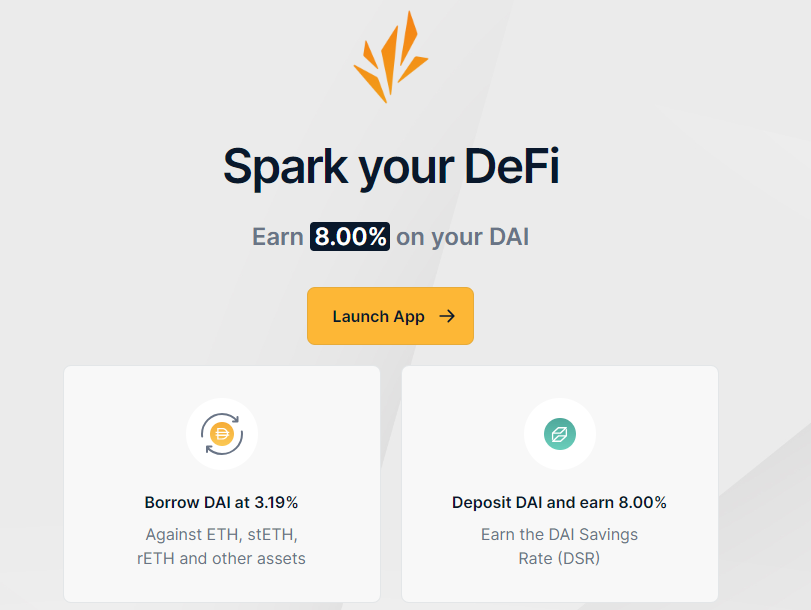
I. Starting with the Growth of DAI
First, there is a question: Why does MakerDAO provide a high yield of 8% for DAI? The answer is clear—Maker hopes to transfer its income and actively provide arbitrage opportunities to users/markets, achieving DAI scale growth through subsidies.
According to MakerBurn data, the supply of DAI has increased from 4.4 billion to 5.2 billion in the past 4 days. Obviously, this is directly driven by DAI's high yield of 8%.
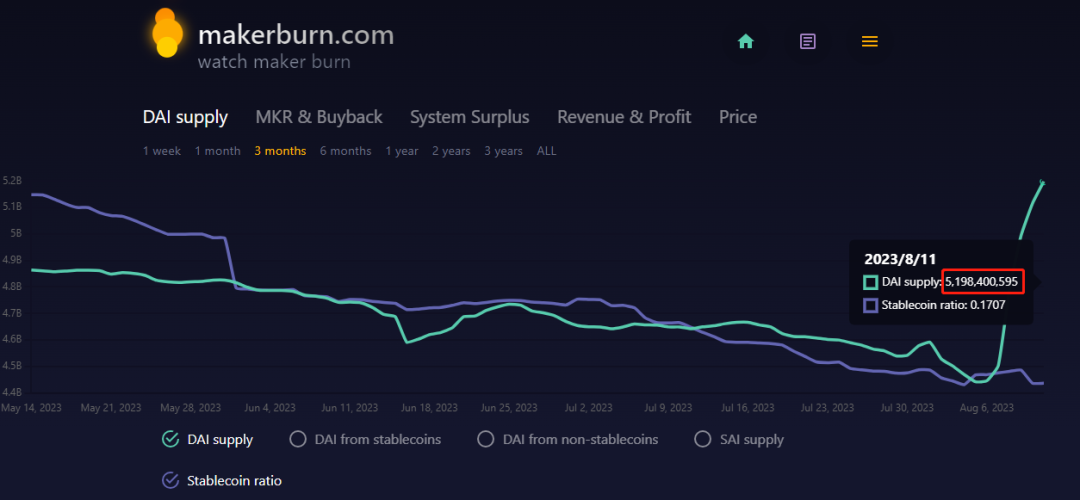
This additional demand is reflected in two ways:
1) Re-collateralization of LSD. Since DSR provides DAI with a high APY of 8%, and the interest rate for minting DAI using wstETH is only 3.19%, this creates arbitrage opportunities. If, based on staking ETH, wstETH is used as collateral to mint DAI and deposited into Spark DSR, the yield can be calculated based on minting $100 DAI with collateral value of $200 ETH:
3.7% + (8% - 3.19%) / 200% = 6.18%
This is obviously better than direct staking and other unlocked, single-asset, low-risk yields in the market, so stETH holders may adopt this method for arbitrage, leading to an increase in the circulation of DAI.
2) Exchanging other stablecoins for DAI. So how can players without ETH or stETH participate? It's simple—exchange USDT/USDC for DAI and then deposit it into DSR, as 8% is attractive both on-chain and off-chain, and this additional demand requires more DAI to satisfy, indirectly driving the growth of DAI circulation.
With the growth of DAI, it can be seen from the estimation of EDSR (Enhanced DAI Savings Rate) that the "Income from new DAI" has increased by 90 million.
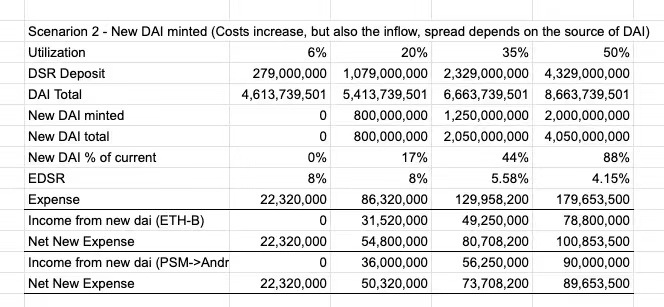
This means that as the circulation of DAI grows, the protocol will also have more USDC, which can be used to exchange for more dollars, purchase more RWA assets, and provide more real income, leading to a flywheel effect.
II. Where Does the Arbitrage End?
The second question is where the growth limit of DAI lies. The answer is when the arbitrage space shrinks to a small enough size. The premise for answering this question is to understand that the essence of the EDSR (Enhanced DAI Savings Rate) mechanism is to actively provide arbitrage opportunities to users.
For users who collateralize stETH/rETH, apart from using it as collateral to mint DAI, stETH/rETH has little use. As long as the interest rate of EDSR is higher than the minting fee for DAI, there is an opportunity.
The situation for USDT/USDC users is more complex. Because USDC/USDT does not need to be collateralized to mint DAI, it can be directly exchanged for DAI on a DEX. From the user's perspective, USDC in AAVE can earn approximately 2% yield, while exchanging it for DAI and depositing it into DSR can earn an 8% yield, making it attractive. Therefore, there will be continuous exchanges by users.
Here is a question: if Maker continues to exchange the USDT/USDC deposited by users for RWA (while keeping the DSR deposit rate stable), the yield of DSR should have a lower limit, and this lower limit should be higher than the on-chain risk-free yield of USDC/USDT. This means that this type of arbitrage should be able to continue for a long time, and DAI will continue to absorb the market share of USDT/USDC.
III. Similarities Between RWA Yield and On-Chain Staking Stablecoins: Encroaching on Traditional Stablecoins
Of course, the path for DAI to encroach on Tether/Circle's market share may not be so smooth, as DAI itself has some shortcomings (such as the security issues of RWA) and is still at a disadvantage in terms of scale. But don't forget, DAI is not the only player trying to encroach on the market share of USDT/USDC. In addition to DAI, there are also crvUSD, GHO, eUSD, Frax, and even Huobi and Bybit have each launched their own RWA assets.
Here arises a division in the stablecoin camp: where does the underlying yield come from?
One camp is the approach of Huobi/Bybit, where the underlying yield comes entirely from the RWA yield, and all that needs to be done is to return the portion of the yield encroached by Tether/Circle to the users. The other camp is stablecoins like crvUSD, eUSD, which are purely on-chain collateralized stablecoins, where the underlying yield comes from the staking yield of the collateral in other protocols (which may expand to more scenarios in the future, such as debt notes serving as collateral). And DAI's model actually combines these two sources of yield.
But all these types point to the same endpoint—reducing opportunity cost, or compensating users for their opportunity cost (for example, holding USDC actually means users are giving up opportunity cost to Circle to invest in traditional assets such as US bonds).
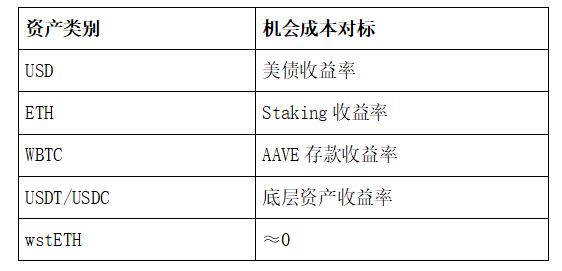
If you choose to mint DAI using wstETH, you can still earn staking yield, and you do not sacrifice any of your APY; if you choose to mint eUSD using ETH, Lybra will charge a small fee, but most of the staking APY still belongs to you. But when you use USD to purchase USDT/USDC, 4%-5% of the RWA yield is taken by Tether/Circle.
Tether's net profit in Q1 2023 alone reached $1.48 billion. If DAI can completely replace Tether/Circle, this will bring real income of $5-10 billion to the cryptocurrency market every year. We often criticize the lack of real income scenarios in the cryptocurrency market, but we overlook the biggest scenario, which is also the simplest—just return the income/opportunity cost that rightfully belongs to the currency holders to them. (For example, Spark can offer a DAI deposit rate as high as 8%, returning the opportunity cost that USD holders incur due to inflation to users.)
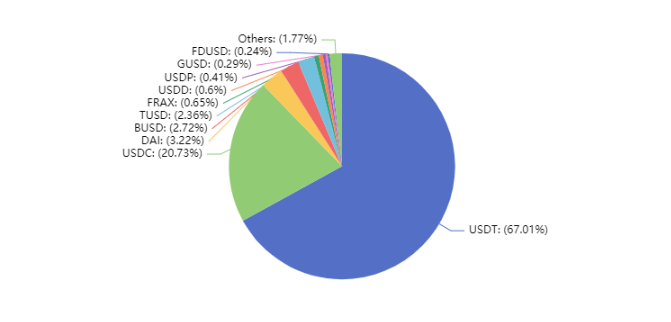
In my opinion, embracing RWA or decoupling from RWA, insisting on decentralization or catering to regulation, these different choices may coexist, but the path of encroaching on the market share of centralized stablecoins is clear. As long as the APY advantage of Spark or Lybra still exists, the market share of USDC/USDT will continue to be encroached. In this regard, the stability of RWA collateral models and on-chain native collateral models is consistent.
IV. A More Efficient Future: Separating Interest and Circulation
There is also an issue with Maker DAO's Spark DSR: Entering DSR means exiting circulation, so the growth of circulation does not truly affect actual business, but rather becomes a game of idle funds. So the question to consider is whether there is a better solution? My answer is to separate interest and circulation.
The specific implementation is as follows:
(1) Separation of DAI's Interest Attribute
Currently, when DAI is deposited into Spark, it becomes sDAI, and the income generated by DSR accumulates on sDAI. For example, when you initially deposit 100 DAI, which is then exchanged for 100 sDAI, with the accumulation of DSR income, when you withdraw, you can exchange your 100 sDAI for 101 DAI, with the extra 1 DAI being your income.
The drawback of this mechanism is obvious: for DAI, interest and circulation are mutually exclusive, and after entering DSR, DAI loses its circulation capability, becoming a game of idle funds.
So, if we take a different approach, users do not directly deposit assets into Spark, but rather through another protocol (let's call it Xpark). Users deposit DAI into Xpark, and Xpark then invests all DAI into Spark for income accumulation. At the same time, Xpark issues xDAI to users. Xpark always ensures a 1:1 exchange between xDAI and DAI; however, the DSR income is distributed based on the amount of DAI deposited, and xDAI holders cannot receive any income.
The benefit of this approach is that xDAI can enter circulation, serving as a means of exchange, collateral, payment, and LP in DEX, and since xDAI can be rigidly redeemed for 1 USD, it can be considered an equivalent to 1 USD without any issues. (Of course, it would be a better choice for Spark itself or MakerDAO to issue xDAI.)
There is a potential issue here: if the adoption rate of xDAI is too low, will it be insufficient to support it as a trusted circulating asset? There is also a corresponding solution to this issue, for example, the DEX scenario can use a virtual liquidity pool (or super collateralization) to achieve this:
1) The protocol first absorbs $1 million ETH and $1 million DAI to form a pool, with 80% of the DAI deposited into DSR, and 20% of the DAI and ETH forming the pool.
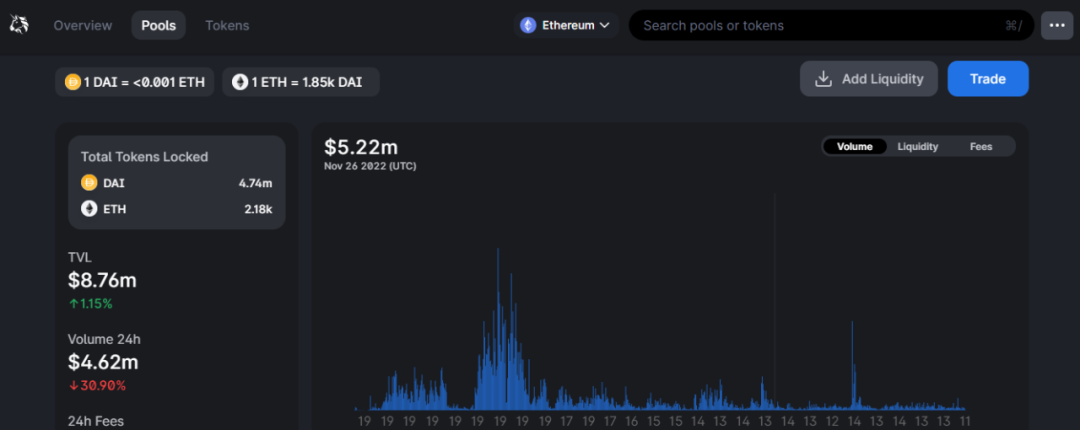
2) When users swap, they use the remaining 20% for acceptance, and if the proportion of DAI rises or falls to a threshold (e.g. 15%/25%), the LP pool will redeem or deposit from the DSR.
3) If under normal circumstances, the LP mining APY brought by trading fees is 10%, and the DSR APY is 5%, then with the virtual liquidity pool, under the same conditions, LPs can achieve:
10% + 50% * 80% * 5% = 12% APY, achieving a 20% increase in capital efficiency.
(2) More Thorough Separation
Imagine a scenario where the collateral for a stablecoin includes government bond RWAs, ETH, WBTC, USDC, USDT, then the best way to obtain the highest APY is to let RWAs earn USD income, ETH earn Staking income, WBTC earn AAVE savings income, and USDT-USDC be used in Curve for LP. In short, try to get all collateral into an interest-earning state as much as possible.
Based on this, the stablecoin is issued, let's call it XUSD for now. XUSD does not earn interest, and all income from the collateral is distributed to the creators of XUSD based on the minting amount and collateral type. This approach differs from the Xpark approach mentioned earlier in that it separates the interest and circulation functions of XUSD from the beginning, maximizing capital efficiency from the start.
Of course, the vision for XUSD seems distant, and even DAI has not yet appeared, but the emergence of tradable DAI DSR certificates is a certainty. If MakerDAO/Spark does not do it, I think a third party will soon take on this task. At the same time, Lybra v2 also plans to achieve this thorough separation, with peUSD as the circulating currency and the exchanged eUSD as the interest-earning asset.
In summary, the vision for XDAI or XUSD still seems distant, but absorbing more real yield, maximizing capital efficiency as much as possible, and separating the functions of interest and circulation will be an inevitable path for on-chain stablecoins. Along this path, the twilight of the gods for USDC seems faintly visible.
免责声明:本文章仅代表作者个人观点,不代表本平台的立场和观点。本文章仅供信息分享,不构成对任何人的任何投资建议。用户与作者之间的任何争议,与本平台无关。如网页中刊载的文章或图片涉及侵权,请提供相关的权利证明和身份证明发送邮件到support@aicoin.com,本平台相关工作人员将会进行核查。




